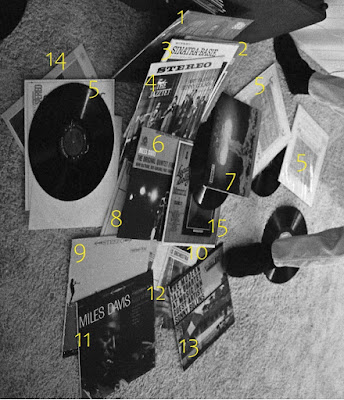Some time ago, I put together Dennis Stock's photos from the first session for Miles Davis's Milestones record.
We now turn to one of the sessions for Miles Ahead, the first Miles Davis/Gil Evans collaboration for Columbia, a relevant LP in Miles Davis's career for its commercial success (the infamous change of covers was made easier by the speed at which runs of prints sold out). The photographs were taken in May 1957 at Columbia's studio on 30th St, Manhattan, and they come from Miles Davis's official website, where they do not carry information on location, date or personnel. From the credits in the Complete Miles/Evans Sony set, we know they were taken by Don Hunstein, Columbia's staff photographer.
 |
| Second and final LP cover (source) |
The most significant image is the one showing the ensemble (except bass and drums), because it shows the positions of musicians and microphones (a grand total of four were used) to record an orchestra out of balance between the brass (one microphone in the middle for five trumpets, four trombones, two French horns and one tuba) and the "reeds" (one microphone for four chairs sharing alto sax/clarinets/flutes/oboe). As the (almost) only soloist, Davis has his own microphone, and I guess the fourth was for bass and drums, out of frame (click on the images to enlarge them).








